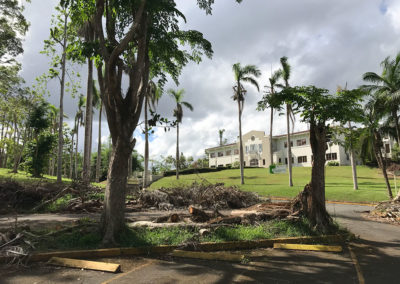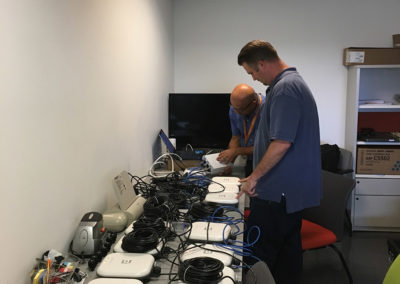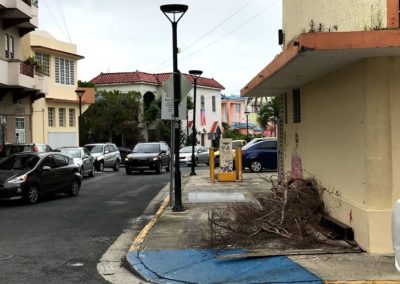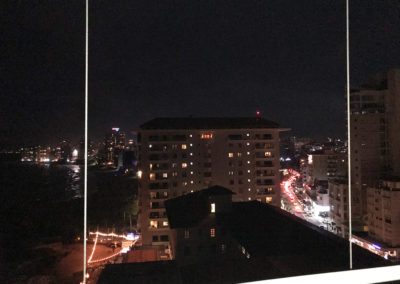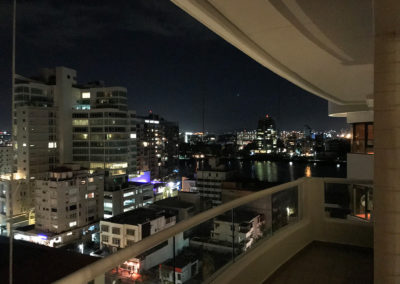Day 2: Establishing Wi-Fi-based Communications to Puerto Rico
This is our second daily log in our series on helping to establish communications leveraging our field solutions team and a generous donation of Wi-Fi equipment from Extreme Networks.
BEI Travel Journal: Day 2 In Puerto Rico
Our day started at the Puerto Rico Science, Technology & Research Trust where we met with the team from the Trust to go over the day’s itinerary, complete final equipment prep and pack the necessary items for the day’s campus visits.
We returned to the University of Puerto Rico Central Administration Campus and met with Victor Diaz (UPR CIO) and brought the additional equipment required to complete the installation for the site. By the afternoon, Victor’s team had the first access points up and active, servicing areas surrounding the main administration that is frequented by the community. The area surrounding the building is home to botanical gardens and paths where the community can escape the surrounding metropolis of San Juan. The foliage and trees experienced significant damage but are still frequented by residents.

After bringing the first access points online, we visited the oldest campus in the University of Puerto Rico system, Rio Piedras, which was built in 1903. Like most of Puerto Rico, areas of the campus experienced major damage. We toured the large campus, and even though the majority of the storm debris has been removed, the damage is visible virtually everywhere on campus—words can barely describe it. The most significant damage is to an administration building that lost multiple walls and a portion of the roof from the winds of Hurricane Maria.
We proceeded to meet with the Director of Information Technology of the campus and his team. We trained them on the installation of the Extreme Networks access points and the ExtremeCloud Portal. We finished up with a discussion of the site and how to maximize coverage of the outdoor areas for use by the community.
We wrapped up the day at the Trust. We inventoried and packed the necessary equipment for tomorrow’s visits. We’re headed out of the San Juan area to some of the more remote areas of the island, including Ponce and Mayaguez.
The Conditions Here
We’d like to share a few examples of why providing connectivity will have a huge impact—even in the metro area.
The power is down in the entire San Juan metro area. Every location is running on generators and we’ve had a hard stop at 5:30 PM each day because they have to power down the generators to conserve fuel. Residents power up their generators at 6 PM. Every light you see in the photos below are powered by a diesel-burning generator.
Cell phone coverage in the metro area is decent but it doesn’t always function. We’ve had full bars and indicators telling us that we’re connected to LTE but we’re often unable to get a strong enough connection to even load a website. Tomorrow when we head to Ponce and Mayaguez, my understanding is that once we leave the San Juan area we will lose cell coverage completely.

On major freeways there are areas that receive good cell phone coverage. In these areas drivers stop in the right lane to use their phones and then move on. It’s obviously a safety issue and creates unnecessary traffic. Due to power being out in the entire metro area no stop lights are working—also a safety issue, and already causing a very difficult traffic situation.
We’re excited about being able to help these people on their journey back to normalcy. The conditions are tough—but people are working together to rebuild—and recover.
View more photos below and learn more from the field solutions team tomorrow.
